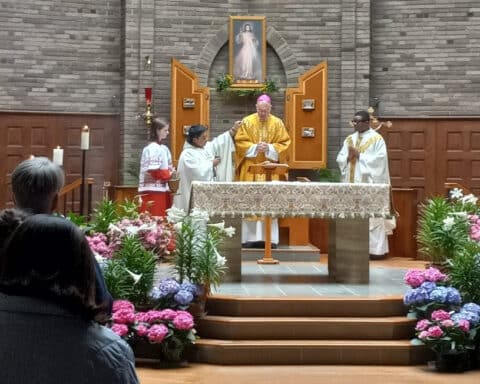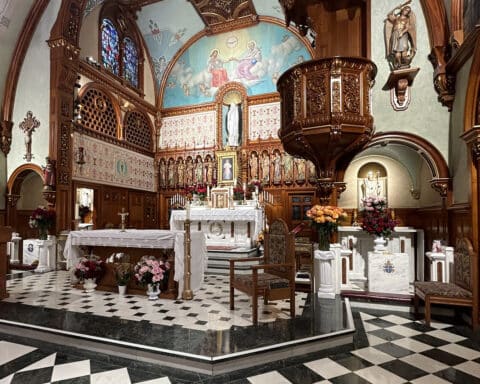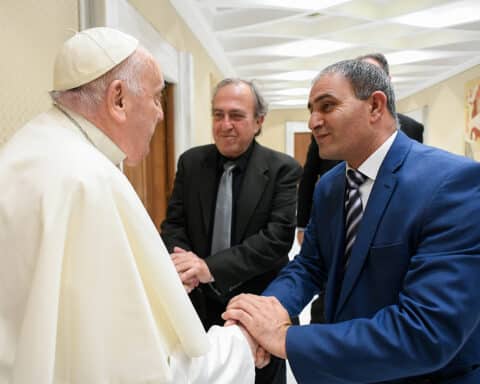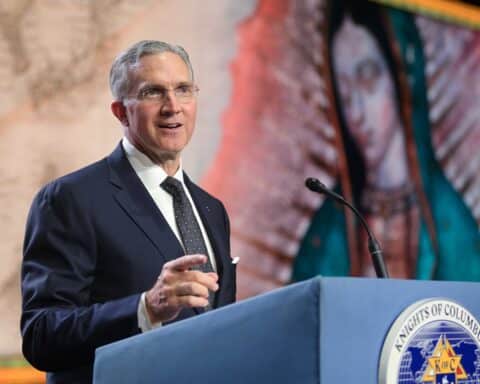We need better images. It has become increasingly obvious that we are starved for trustworthy and reliable images of manhood in our present age. The unreliability of the current popular images of “man” are likely related to the deteriorating image of “fatherhood” in the modern world.
The men felled by sexual misconduct allegations over the last nine months have offered an image of manhood that consists of using others to satiate their own appetites. Perhaps these prominent men show the inevitable outcome of unchecked power, of misdirected authority, of self-indulgent customs that fuel the cults of personality. But this behavior exists in private places, too, and indeed a widespread remediation is necessary to cure our young men of the tendencies that might lead to such actions.
Using others makes everyone a slave of their own appetites. What is missing is the power to fulfill responsibilities, to create life and secure wellbeing for others, and to trade away selfish desires for another’s good.
Images of fatherhood
Images shape our imaginations. Healthy imaginations hunger for nourishing images, while weakened imaginations crave new, better images.
The only way to fully drive out inadequate and corrosive images is to rediscover healthful and vibrant images to heal and nourish our imaginations. The good news for Catholics is that our tradition is rich with such examples, if we know where to look for them. These edifying images are not likely to flash across newsfeeds, but instead arise from religious art, the lives of saints and Scripture.
This article will explore the hope of poet Charles Péguy’s lumberjack character, the witness of Franz Jägerstätter and the weary tenderness of Rembrandt’s Prodigal Father. In these examples, the images of true fatherhood take shape: Fathers work to provide. Fathers discern what is true and good. Fathers occupy a deep spiritual place in the lives of even those who aren’t their biological children. These are the kind of images that nourish and even heal.
Leonard J. DeLorenzo, Ph.D., serves in the McGrath Institute for Church Life and teaches theology at the University of Notre Dame. His latest book is “What Matters Most: Empowering Young Catholics for Life’s Big Decisions” (Ave Maria Press, $16.95).
THE WORKING FATHER:
The lumberjack in Péguy’s ‘The Portal of the Mystery of Hope’
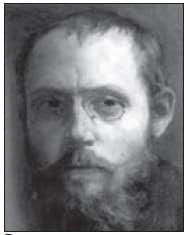
The French poet and essayist Charles Péguy published his meditative, theological poem on the virtue of hope in the fall of 1911, fewer than three years before the outbreak of World War I, where he met his own untimely death. “The Portal of the Mystery of Hope” appeared just as the virtue of hope was in short supply but never more necessary.
In the poem itself, Péguy touches on a pleasing array of quite specific and very earthy images of hope — like gardens and candles and dogs and above all “the little girl hope” — but one of the figures on whom hope has the greatest effect in the poem is a lumberjack. He is the one who is warmed by the vision of his children playing before the fire while he himself labors in the dead of winter.
After introducing the triad of theological virtues — faith, charity and hope — who walk along like two older sisters and a younger one, or two women and a child, with the youthful hope always providing the energy, Péguy introduces and repeats the mantra that “no one ever works except for children.” If not for the promise of a future that children themselves are, no one — wearied by the demands of life — could muster the energy to do any more than merely meet their own meager needs when the wintertime of life’s seasons comes again and again. This is where Péguy focuses on his lumberjack — a father who goes into the icy forest to fell trees that will warm the house where his children play.
The meaning of fatherhood is caught up in this image for Péguy: One whose energy comes not from himself, but from his love for others. One who braves the cold for their warmth. One who labors for their wellbeing. One who ultimately finds delight in their future.
Péguy hails the mystery of hope by juxtaposing the inhospitable conditions of the forest with the comfort of the home that the father provides for his family:
“And he’s completely numb and his teeth are chattering / And the frost makes icicles in his beard. / All of a sudden he thinks about his wife who stayed at home. / … Whose husband he is before God. / And about his children who are peaceful and safe at home. / Who are playing and having fun right now in front of the fire. / … In a flash he sees his three children playing and laughing in front of the fire. / His three children, two boys and a girl. / Whose father he is before God.”
— “The Portal of the Mystery of Hope,” (Eerdmans, $19.50)
His labors do not feed his own private appetites, nor do they build up his own stature. Instead, his sacrifices nourish his loved ones, especially his children.
From the pen of a man who was but a few short years from his own death, leaving behind three children and a fourth yet to be born, this image of the lumberjack — whose warmth comes from the thoughts of his children on the coldest of days — is likely not too far from poet’s own experience of fatherhood.
|
“How wrong are those who do not hope, dear Péguy! Judas was terribly wrong the day he sold Christ for 30 pieces of silver, but he was much more wrong when he thought his sin too great to be forgiven. No sin is too great: a finite wretchedness, however enormous, can always be covered by an infinite mercy. And it is never too late; God calls himself not only Father, but Father of the prodigal son. He sees us when we are still far away, he is moved, and runs to us, throwing his arms around our neck and kissing us tenderly.”
— Cardinal Albino Luciani (later Pope John Paul I) in a letter the future pope wrote to the long-dead poet Charles Péguy.
|
THE DISCERNING FATHER:
The witness of Blessed Franz Jägerstätter
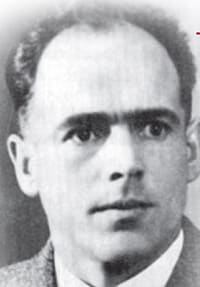
Nearly 30 years after Charles Péguy fell on a battlefield during World War I, the Austrian farmer Franz Jägerstätter was awaiting execution in a Nazi prison for refusing conscription into Hitler’s army.
At first glance, it might appear that Franz traded away his family and his farm and even his Austrian homeland for his principled stance against the seemingly unlimited power of the Third Reich. But his own testimony reveals something quite different. Rather than choosing his principles or even his faith over and above those nearest and dearest to him, he chose to love all those he held dear by choosing the Word of God over the command of what he knew to be an evil regime.
Through years of his own practice of the Catholic faith, Franz developed his conscience through the studious reading of Scripture and a considerable amount of time journaling and puzzling over the challenges of his day. He was a regular communicant, a sexton at his parish and a Third Order Franciscan. He and his wife, Franziska, made a pilgrimage to Rome in place of a honeymoon and vowed to return every 10 years (which they could not do because he was killed only seven years after their wedding). He had a dream that the Hitler Youth was a train bound for hell, and he redoubled his efforts to educate his children in the Catholic faith.
All of this led to his stance against the Nazi regime, one that drew no fanfare and left him nearly isolated, but for the love of his wife and the affection of their three daughters. From prison, in what he believed to be his final letter, he offers his family what he cherishes as the most precious thing he has to give:
“Now my dear children, when your mother reads this letter, your father will already be dead. … Out of my experience I can say that life is painful when one lives as a lukewarm Christian. To exist this way is to have more the existence of a vegetable than to truly live. If a person were to possess all of the world’s wisdom and be able to claim half the earth as his own, he could and would still be less fortunate than a poor person who can claim nothing in this world as his own other than a deep Catholic faith. I would not exchange my small, dirty cell for a king’s palace if I was required to give up even a small part of my faith. All that is earthly — no matter how much, nor how beautiful — comes to an end. But God’s Word is eternal.”
— “Franz Jägerstätter: Letters and Writings from Prison” (Orbis, $25)
In the end, Franz did not sacrifice his family for his faith; he made a sacrifice in faith for the sake of his family. What he suffered and all that he lost was the price of securing for them this most precious gift: the unimpeachable witness to the eternal power of the Word of God. In order to give that gift to them as the most precious thing, he had to treat it as such — and he did, at the cost of his own life. In so doing, he showed his children that true life means trusting in God’s Word and staking your whole being on that truth.
|
“But is it even possible to place such a faith in the heart of children? With God’s help nothing is impossible. Of course, this is the primary task of parents. If parents do not live what they teach, catechists — even when they show great concern for children — will have difficulty being successful in teaching the children to be good Catholics. … The education of children in the faith is therefore the most difficult challenge facing parents.”
— Blessed Franz Jägerstätter
|
| What Challenges Do Discerning Fathers Face Today? |
|---|
|
Contemporary fathers face different challenges than those trying to live according to their values under Nazi rule. But living in an increasingly secular society does mean fathers — and parents in general — must seek to raise young people:
– Who recognize the inherent dignity of all people and refuse to dehumanize others
– Who respect the inviolability of the family and resist both direct and indirect forces that seek to tear it apart
– Who understands the toxic draw of materialism and the value it places on consumption and busyness
– Who see the centrality of God, our relationship to him and his presence in our neighbors and all of creation
– Who grasp the sacredness of human sexuality and treat it as a gift to be used as God intends.
|
THE SPIRITUAL FATHER:
Henri Nouwen and Rembrandt’s Return of the Prodigal Son
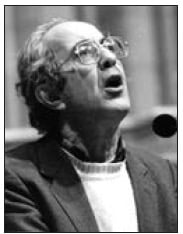
While Franz Jägerstätter bequeathed to his children his faith in the Word of God as the foundation on which to build their lives, the Dutch priest Henri Nouwen first glimpsed the home he himself had been seeking in a poster reproduction of a 17th-century masterpiece. Nouwen was 51 years old, weary from work and travel, and questioning his place in the world. He was feeling rather homeless — in multiple senses — when the image of the aged father enveloping his battered son in Rembrandt’s rendition of the ageless parable caught his eye from across a room. It was the embrace that first captured him — that kind of embrace was just what he was looking for.
Three years later, in a hermitage in St. Petersburg, Russia, Nouwen gazed at Rembrandt’s original painting. He sat in front of it for hours, watching as the sunlight made its way across the room. He let the painting speak to him and show itself to him. He studied the father’s hands, his failing eyes, his garment, his posture. He imagined and even became convinced that he himself was like the lost son, seeking the embrace of that father.
Which son?
The younger son had squandered everything. He demanded his inheritance from his father, which amounted to wishing his father dead. He spent that great wealth needlessly and shamefully. He had been dispossessed of everything except for one thing: his sword. Rembrandt paints the younger son — tattered and dirtied and bruised as he is — still with his sword around his waist. Even in all his debauchery, he has retained this one sign of dignity: He is still his noble father’s son. This was balm to the weary Nouwen.
But a good friend told Nouwen, in no uncertain terms, that he was more like the elder son than the younger one. And with this, Nouwen was forced to reexamine his conscience. The elder son does not stand in the center of the light — where the embrace happens — but stands removed, just at the edge of the encounter’s glow. The elder son observes, he measures, he judges. He — along with the other figures around the scene — represented to Nouwen different ways of “not getting involved.” They represent indifference, curiosity, daydreaming and attentive observation.
To the man of many words, who gave lectures, who wrote books, who could see right from wrong and truth from falsity, Nouwen was all too familiar with standing at a distance from the messy and wounding embrace that the younger son experienced. This elder son was also in need of a homecoming, and his journey — though short on a map — would require a change of heart so he could become humble, vulnerable and therefore brave.
Loving like the father
As he dwelt year after year with Rembrandt’s painting and the inexhaustible parable that it presents, Nouwen finally glimpsed another possibility in the painting. Rather than the younger or the elder son, he began to imagine that he was being called to take on the life of the father himself. When he first set eyes on the painting, he was needy, tired and looking for a home, but over the years the painting and the parable suggested to him that his true home would be found by giving a home to others. His true comfort would be in giving comfort; his true strength in being strong for those who are weak. A priest for decades, he had begun to grasp the deepest mystery of his vocation: to become a father in the image of this father, who is the image of God the Father.
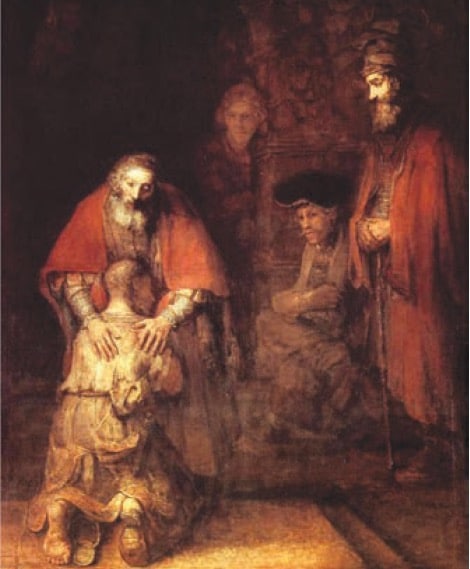
“I am no longer called to come home as the younger or elder son, but to be there as the one to whom the wayward children can return and be welcomed with joy. It is very hard to just be home and wait. It is a waiting in grief for those who have left and a waiting with hope to offer forgiveness and new life to those who will return.”
— Henri Nouwen, “The Return of the Prodigal Son” (Doubleday, $16)
Nouwen was no longer a child in earthly or spiritual terms; instead, he was becoming a man like the father of both sons: the one who bore power in one hand and tenderness in the other, and placed both those hands on his child’s shoulders. This man’s eyesight had been strained over years and many empty nights scanning the horizon for any sign of his beloved’s return. This was a man whose regal clothing was never too stiff to allow his chest to become concave as he drew his child’s head towards his heart. This was a man whose very embrace was light itself.
Nouwen received this gift from Rembrandt’s painting, but only because Rembrandt had first learned this mystery through his own suffering. Rembrandt had been the profligate and flamboyant young man, who indulged his own fancies without thought of responsibility. He had been the elite observer who could paint a scene with exquisite detail. But he became someone different later in life when he suffered the death and illnesses of his loved ones, when he fell out of favor and hit on hard times, when he discovered that true joy in life is giving life to others. “One must have died many deaths and cried many tears,” Nouwen wrote of Rembrandt, “to have painted a portrait of God in such humility.”
A father weeps, a father longs, and a father always welcomes those who come to him seeking comfort, guidance, warmth. A father’s strength is found in the power to wait and the willingness to love, no matter the cost.
|
“Rembrandt’s embrace remained imprinted on my soul far more profoundly than any temporary expression of emotional support. It had brought me in touch with something within me that lies far beyond the ups and downs of a busy life, something that represents the ongoing yearning of the human spirit, the yearning for a final return, an unambiguous safety, a lasting home.”
— Henri Nouwen
|


